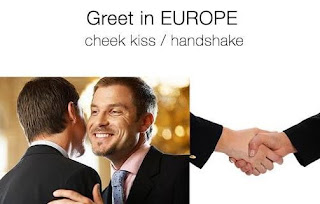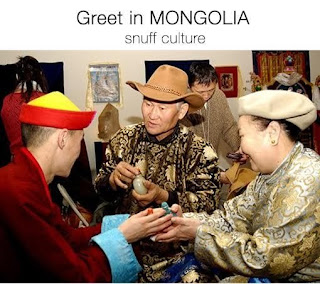Greetings from Different Countries
Greetings from different countries
1. Greetings in China
Handshaking is a silent way of greeting which is more common in China, although it is a popularly used form of greeting in many countries worldwide. Many western countries accept hugs and kisses as a popular form of greeting, although a handshake is still the formal way of greeting people. In China, a handshake or a simple and kind salutation is common. It is common on most social occasions as an expression of courtesy and greeting when people meet or say goodbye to each other. Besides, handshaking is also a way to express congratulations, thanks, and motivation to others.
It is becoming popular to shake hands upon meeting, but sometimes, a simple nod is how the Chinese will greet each other. When a handshake is given, it may be firm or weak, but don’t read into the firmness of the handshake as it’s not a sign of confidence like in the West but a simple formality. Avoid hugging during greetings and farewells.
2. Greetings in Europe
After verbal greetings, the handshake is by far the most common form of greeting among both males and females in Europe. This is especially true for the first meeting. In England, adults, across all levels of society, a handshake of greeting and on parting.Greeting in UK is a brisk couple of shakes; American is a long pump-action that can be disconcerting to Brits and Europeans.
If a culture embraces kissing as a form of greeting, one of the most difficult lessons is to learn how many and to whom! In the south of France, it’s three, in Burgundy, the Jura and Paris it’s two. In some regions just outside of Paris, the number is four!!? That is exasperating as by the time you are done, you practically have bruises on your cheek.
3. Greetings in India
You are going to impress your Indian partner or client if you greet them in their native language. To greet in India, Say Namaste while pressing both your palms together, fingers touching one another and pointing upward, and making a simple bow. The most common way of spelling out their personal names is, to begin with, the given name than the family name. However, in some areas, some men don’t have any family names. Make sure you can verify to them the right way of saying their complete name. Women usually make use of their husband’s family name once they get married.
4. Greetings in Japan
If you travel to Japan, knowing how to bow and greet in Japan can be helpful. Bowing is an important custom in Japan. People commonly greet each other by bowing instead of handshaking, and people generally have a small conversation after or before they bow.
This custom is used constantly in Japan. You may even see people bowing while on the phone. Keep in mind that men and women bow differently—men usually keep their hands at their sides, while women put their hands together on their thighs with their fingers touching.
A conversation/greeting generally starts with "Konnichiwa" or "hello." In the evening, you would say, "konbanwa" meaning "Good evening," and in the morning you would usually say, "ohayō gozaimasu," meaning "good morning,"
5. Greeting in Mongolia-
In Mongolia when people greet each other during a ceremony or a festival, they will offer their snuff bottles in the upturned palm of their right hand with the lid partially opened. The person being greeted will take out a pinch of snuff using the small spoon attached to the lid. Then they place the pinch of tobacco on the back of their hand before “snuffing” it up to their nose. Even if you don’t want to sniff any snuff that day, it’s respectful to hold the bottle close to your nose, to smell the fragrance before passing it back.





Comments
Post a Comment